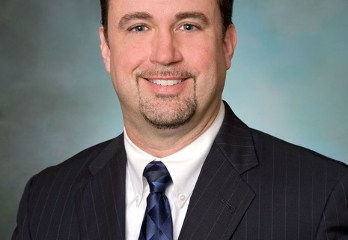Scenes from what is unarguably the worst domestic-policy disaster of the last few decades:
In March, the Congressional Budget Office released its fiscal projection to 2026. The National Center for Policy Analysis’s John R. Graham blogged that the document “significantly reduced estimates of Obamacare’s benefits, relative to CBO’s estimates published in 2010.” The number of uninsured will be higher. Employer-provided insurance will decline. And Medicaid enrollment will experience “an increase of almost one third in the welfare caseload,” from 52 million to 68 million.
Last month, citing a “smaller overall market size and shorter term, higher risk profile within this market segment,” UnitedHealth Group announced plans to bail on a majority of the states where it participates in “exchanges.” The insurance behemoth, CNN noted, “lost $475 million on the … exchanges last year and could lose another $500 million this year.”
A few weeks later, Reuters reported that Humana “is considering ending the sale of Obamacare individual plans in some states in 2017 to stem losses there.” The Washington Examiner’s Robert King wrote that the company “hinted at potential price hikes” by noting that it will have to make prices “commensurate with anticipated levels of risk by state.”
Watchdog.org’s Jason Hart found that “Ohio Medicaid expansion costs sailed farther past Gov. John Kasich’s projections in March, as total spending on the program topped the $7.5 billion mark.” It is now “likely” that expansion will “cost twice as much as Kasich said it would by 2020.” (In February, during a presidential debate, the governor claimed that expansion “has worked out great for us, and we’re saving money.”)
New Mexico’s Department of Human Services outlined a broad agenda of reimbursement cuts to Medicaid service providers. In the current and 2017 fiscal years, the Land of Enchantment needs to plug a $417 million gap between revenue and expenditures for the largest portion of its state budget. Medicaid expansion in New Mexico has exceeded expectations — naturally — and by 2020, the state estimates that 43 percent of its population will receive “free” health care.
The Kentucky Legislative Ethics Commission disclosed that during January and February, “lobbying spending by health care providers, health insurance companies, and other health-related businesses and organizations totaled about $1.26 million, which is 26 percent of all lobbying spending, and a 30 percent increase over health-related lobbying spending in the same period in 2014.” A commission spokesman said that the growth was driven by “more interests which want to get in a position to possibly benefit from some of that money that’s paid out, particularly in Medicaid.”
A University of Michigan and UCLA study published in Annals of Internal Medicine further documented Medicaid’s ineffectiveness. As Kaiser Heath News put it, in “states that expanded Medicaid under the Affordable Care Act,” despite greater doctor visits and more stays in hospitals, researchers “found no improvement in adults’ own assessments of their health.” Much more work remains to be done, of course. But the finding tracks with that of the most extensive investigation of Medicaid expansion pre-Obamacare. Researchers concluded that those newly enrolled in Oregon’s program experienced “no significant improvement in measured physical health outcomes.”
Prevention, a big part of Obamacare, isn’t making much progress. A survey of 3,031 full-time workers by CareerBuilder found that more than half considered themselves overweight, due to sedentariness and binge-eating. Yet as the Pittsburgh Post-Gazette reported, among those who felt fat, “more than half who have access to gyms or wellness programs through their employer say they don’t use them because they can’t squeeze exercise into the workday.”
Health care in America had plenty of problems before Obamacare. State and federal mandates unnecessarily boosted prices. Government spending on hundred-billion-dollar programs — e.g., Medicare, Medicaid — was unsustainable. And employer-provided health care separated millions of workers from the true cost of their coverage.
Despite health care’s fatal flaws and frequent frustrations, the year Obama was elected, Gallup found a fairly respectable 70 percent of Americans rated their coverage “either excellent or good.” No matter. Obsessed with the “crisis” of the uninsured, and seizing a unique moment in political history, liberals got their way.
According to Graham’s colleague Devon Herrick, “Our health care system is going to implode under its own weight. National health expenditures are approaching 20 percent of gross domestic product — a figure that is expected to about double over the next half century.” Obamacare alone didn’t create the problem. But the 44th president’s signature legislative “success” made it far, far worse.
Former Nevadan D. Dowd Muska (www.dowdmuska.com) writes about government, economics and technology. He lives in Corrales, New Mexico. Follow him on Twitter @DowdMuska.




